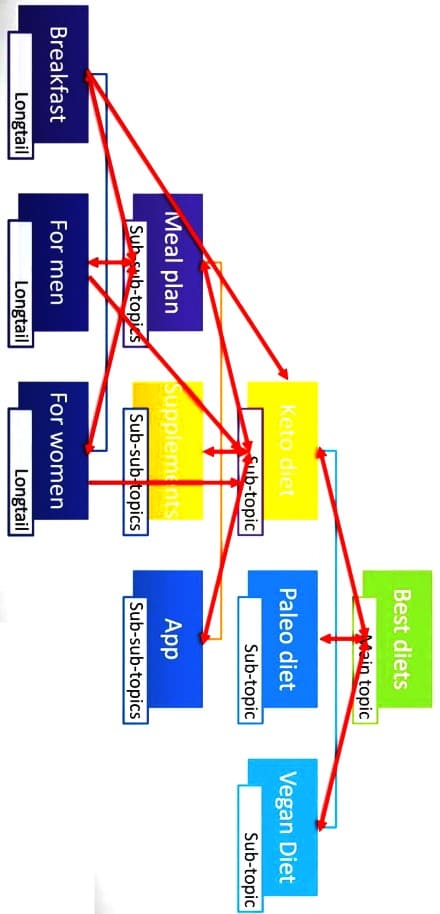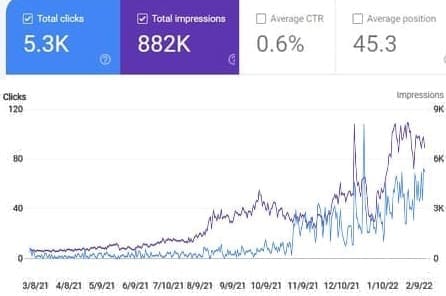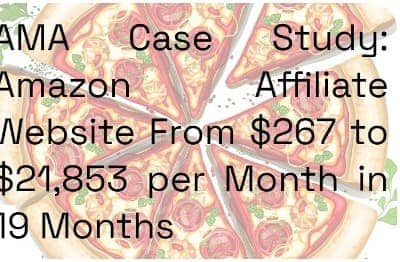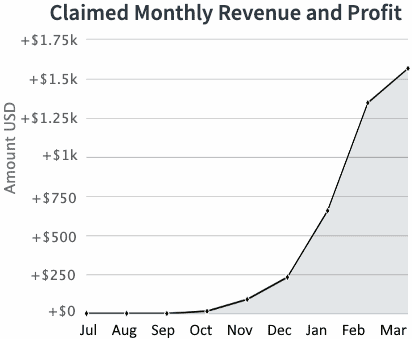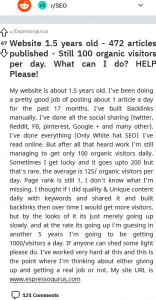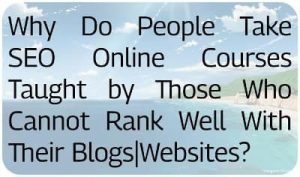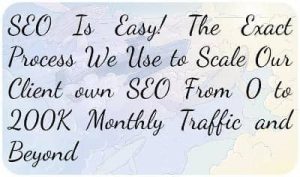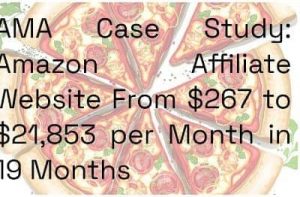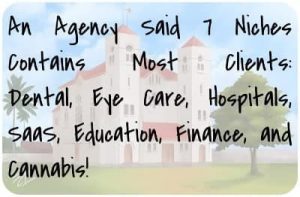Dabi
SEO + Content Case Study
We did an SEO experiment that has blown our minds away.
Website Type – Business Website
Business Model – B2B & B2C
Target Country – United States & Canada
🔥🔥Result😱1900% increase in average daily organic search traffic in 6 Months. 50 users/ day to 1000 users/day.
Conclusion – Rise in Impressions is directly proportional to Rising Authority in Google. I.e. with rising impressions, the website authority rises.
Tools We Used – Ahrefs, SEMrush, Keywordtool.io, Cora SEO, Surfer SEO, Google Analytics, Google Search Console, SERP Robot.
I will try to provide as much detail as possible to make it clear at the conceptual level.
🏁🏁—— Let's Begin—–🏁🏁
We have a thin content website in hand in October <year>. A website with around 50 average organic traffic per day, not strong brand searches, few backlinks, and a lot of clients' expectations. We had a 1000 clicks per day organic traffic goal to achieve in the next 6 months.
Here is how we achieved the desired traffic goals.
I first break down the entire process for you into 3 key processes.
Keywords Research, Keyword grouping, and keyword funneling.
Content
On page
📰👈
1. KEYWORDS RESEARCH AND KEYWORD GROUPING
We did keywords research and funneled the keywords based on searcher intent and sales funnel. After that, We had our lists of transactional, navigational, informational, decision making, and geo-targeted keywords.
When we analyzed the keywords in Ahrefs, All odds were against us. You can see in the attachments High keyword difficulty keywords. 40 was the minimum Keyword Difficulty (KD) we saw.
Next, we immediately planned to start producing content.
Before jumping to content. We did a second layer of keyword grouping to make sure we don't produce any waste content during the process that does not generate impressions for us.
THE CONTENT
The content was the major part of this strategy. But unlike other content strategies, Instead of targetting transactional keywords like buying something, or buy something online or best something in Los Angeles.
⚠️The biggest risk we took.
We started with navigational keywords🤔. Our content team came up with a series of content ideas that had the potential to rank on navigational branded keywords.
With On-page optimization, in-depth internal linking we published roughly around 100 blogs in 3 months with an average length of 1500 words per article all targeting different brands.
Right from week 1, we started to see a huge impression jump, and by the end of 1 month, we started to get clicks only.
Once we had consistent organic impression growth in the Google search console. But most of them were navigational brand keywords.
we start producing content on transactional keywords next and as soon as we start publishing, We could easily see that our published navigational blogs have already set some domain authority in google, and because of this our new articles were indexed in the top 50 from the very first day of discovery.
In Total, we published 250 blogs so far and every single blog is contributing impressions. So far we reached nearly 1000 clicks/day but we are all ready to cross 2000 clicks/day in the next 4 months. With a lot of high-volume keywords rankings on page 2.
There are a few other off-page and technical SEO things involved but I think content and keyword targeting play a major role in the strategy to perform well.
I hope you will find it useful. And This small case study gave you another perspective to see domain authority beyond tools.
The Proper SEO Group is my motivation for taking a scientific SEO approach. It's been 2 years of being part of this community. Thanks to admins and moderators for maintaining this healthy community.
126 👍🏽14 💟142
91 💬🗨
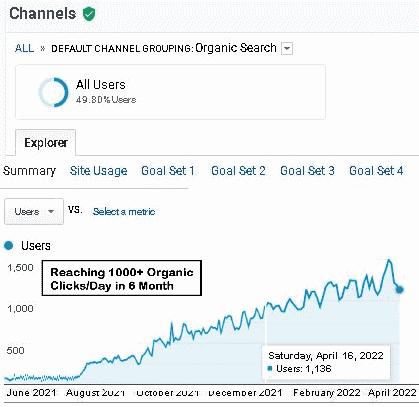
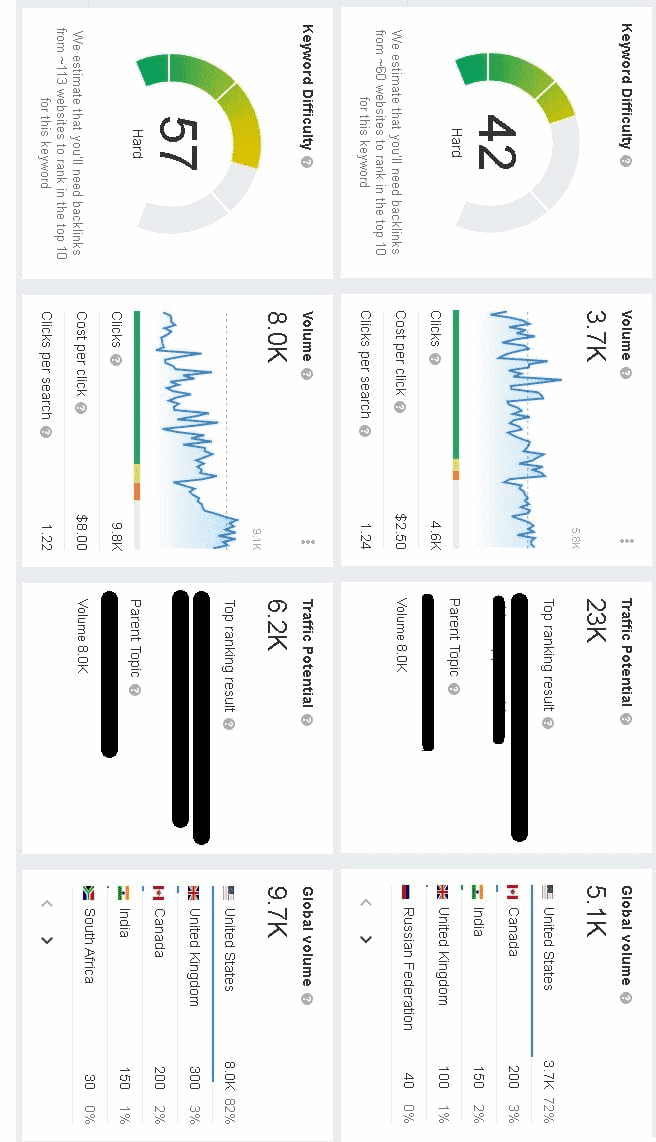
First and foremost I applaud your process and approach and documentation.
The scientific method of seeing what works for each cleint individual and uniquely has tremendous value in a world of magic tracks and jargon that don't work or move the needle.
What you have demonstrated here is proof of strategy. You hypothesize then test then provide imperical data. My case study for surfer 4 years ago was very similar and it just makes sense. Starting with intent then topical authority and staying within your fighting weight and level up when the Search Engine Result Page (SERP) allows it.
It has very little to do with authority (this is a fictitious number used by tools)and backlinks as you discovered and technical SEO that has no correlation with conversion or clicks doesn't move the needle much it's a long game.
QDF query deserves freshness you proved that.
This process imo is a bit accelerated at 100 articles and a bit unnatural so expect some shaking up.
Keep in mind each article will go through cycles of relevance of each keyword branded, short and long tail as well as who,what,where,when and why.
You will see fluctuations you will see corrections you will have drop offs and rebounds. Expect that!. So I'll add to your process.
Revisit these posts with the content auditor and optimize within three months. Schedule it. Part two assess your donkey posts that aren't moving or driving Return of Investment (RoI). Can you combine and prune posts? If so do that. Turn your donkeys into champions then turn the champions into unicorns. Expect out of 100 posts maybe 1 to 10 to really drive 90 percent of the organic traffic. And last but not least don't lose focus of your site visitors because when you think like a site visitor you think like a search engine.
Great job! and yeah maybe you didn't price out your service as you should great things always have small beginings, what's important here all together is that you are learning in order to succeed in Search Engine Optimization (SEO) is to think of the clients business metrics and adapt your strategy to their goals with the success metrics that matter and to bring in quick wins. Revenue over Rankings!
Shapow, thanks a ton for your valuable honest feedback. I am honoured to receive your comment.
I absolutely agree with you and thank you again for the action item you shared.
Our first phase was to setup an organic process to prove that it works. It was hard to convence.
As soon as we saw constant traffic rise. We pin pointed our efforts on conversations and improved the conversions by around 120%. We daily view user session records to understand things from visitors end. We want to deliver traffic that converts.
Yes, costing i feel i have to work. To be honest It's just been 7 months starting my own SEO agency and we stabilise 8 clients. Just by following the principle your shared revenue over rankings.
Now you can understand, All that matter to me and my team is delivering results and giving clients months after months organic progress.
The best past is that we are enjoying this game so much and trying to keep things simple, straight forward, strategic and documented.
Tobi
Question, how do you manage to achieve 100 blog posts in 3 months without it eating your entire budget?
Teamwork and my experience in the field exactly where to put energy and money. Especially in content. I had developed 2 blogs with over 1 million organic visitors per month and some half a million traffic blogs while I was working for the agency.
I and my team prepared a complete content plan funneling everything with the expected budget and timeline within the first week. But the writing work we started from day one. Sound surprising I know, but I know from my experience, that too much planning kills and it's all about execution.
Initially, the client came with content requirements only. So he has 10 topic ideas to work on. Our writing team was given Standard Operating Procedures (SOP)s and brand documents after the first meeting and they started from day one, we finished the next phase of research and planning sops within 1 week. Monthly breakdown was
Month 1 – 30
Month 2 – 37
Month 3 – 33
Our SOPs and brand documents were ready and writers have to follow the checklist and deliver the work on time.
One more important thing that helped is our planning. Since we were targeting navigational keywords. We prepare different SOP targetting the same intent for example we have 10 sops for writing on the topic – 101 guide.
It wasn't that difficult because we have already handled this much amount of content work. Having our full-time in-house team helped make this happen.
We were confident in the strategies and we just need to put things into action.
Trombley
Thanks for sharing. The "before" sounds like our story. So this is promising. Is your client finding the navigational content is increasing prospect conversations/demos, closed-won and revenue? Of course whether they see revenue yet depends on length of their sales cycle. Or, do you have a longer-term strategy of building authority on navigational keywords first then shift to building traffic with keywords that convert to revenue? While I see value in SEO case studies, often the case study info stops at your success measures. For the client, the success is revenue.
Yes I absolutely agree on this part. Conversion and revenue is the main part we immediately shifted to after 4 months. So far within 3 months, we improved the organic conversion by 120%. For this business. It's a very high-ticket business. one closure means a minimum sale of $25,000. Now you can understand how much revenue adds up, what ROI the business will be enjoying and what a 120% increase in organic conversion means.
This case study is mainly on content and content strategy. In it's second part i will take about the conversions.
102 Best SEO Tips to Help You Drive Traffic This Year: Do Keyword Research, Hire Writers
What is the Best Keyword Clustering Tool? How Dependable Are They as Compared to Manually Doing the Same Task?
Three Steps to Write a Good Affiliate Product Review Article for SEO
The Summary of Discussion 1: SEO Case Study: Keywords Research and Keyword grouping; Target: B2b and B2C in the US and Canada
Dabi
SEO + Content Case Study
We did an SEO experiment that has blown our minds away.
Website Type – Business Website
Business Model – B2B & B2C
Target Country – United States & Canada
🔥🔥Result – 😱1600% increase in average daily organic search traffic in 5 Months. 50 users/ day to 850 users/day.
Conclusion – Rise in Impressions is directly proportional to Rising Authority in Google. I.e. with rising impressions, the website authority rises.
Tools We Used – Ahrefs, SEMrush, Keywordtool.io, Cora SEO, Surfer SEO, Google Analytics, Google Search Console, SERP Robot.
I will try to provide as much detail as possible to make it clear at the conceptual level.
🏁🏁—— Let's Begin—–🏁🏁
We have a thin content website in hand in October <year>. A website with around 50 average organic traffic per day, not strong brand searches, few backlinks, and a lot of clients' expectations. We had a 1000 clicks per day organic traffic goal to achieve in the next 6 months.
Here is how we achieved the desired traffic goals.
I first break down the entire process for you into 3 key processes.
Keywords Research, Keyword grouping, and keyword funneling.
Content
On page
1. Keywords Research and Keyword grouping
We did keywords research and funneled the keywords based on searcher intent and sales funnel. After that, We had our lists of transactional, navigational, informational, decision making, and geo-targeted keywords.
When we analyzed the keywords in Ahrefs, All odds were against us. You can see in the attachments High keyword difficulty keywords. 40 was the minimum Keywrd Diffiuty (KD) we saw.
Next, we immediately planned to start producing content.
Before jumping to content. We did a second layer of keyword grouping to make sure we don't produce any waste content during the process that does not generate impressions for us.
The Content
The content was the major part of this strategy. But unlike other content strategies, Instead of targetting transactional keywords like buy something, or buy something online or best something in Los Angeles.
⚠️The biggest risk we took.
We started with navigational keywords🤔. Our content team came up with a series of content ideas that had the potential to rank on navigational branded keywords.
With On-page optimization, in-depth internal linking we published roughly around 100 blogs in 3 months with an average length of 1500 words per article all targeting different brands.
Right from week 1, we started to see a huge impression jump, and by the end of 1 month, we started to get clicks only.
Once we had consistent organic impression growth in the Google search console. But most of them were navigational brand keywords.
we start producing content on transactional keywords next and as soon as we start publishing, We could easily see that our published navigational blogs have already set some domain authority in google, and because of this our new articles were indexed in the top 50 from the very first day of discovery.
In Total, we published 250 blogs so far and every single blog is contributing impressions. So far we reached nearly 1000 clicks/day but we are all ready to cross 2000 clicks/day in the next 4 months. With a lot of high-volume keywords rankings on page 2.
There are a few other off-page and technical SEO things involved but I think content and keyword targeting plays a major role in the strategy to perform well.
I hope you will find it useful. And This small case study gave you another perspective to see domain authority beyond tools.
SEO Signals Lab is my motivation towards taking a scientific SEO approach. It's been around 4 years being part of this community. Thanks to Kang and other admins and moderators for coming together and building this laboratory.
161 👍🏽27 💟189
87 💬🗨
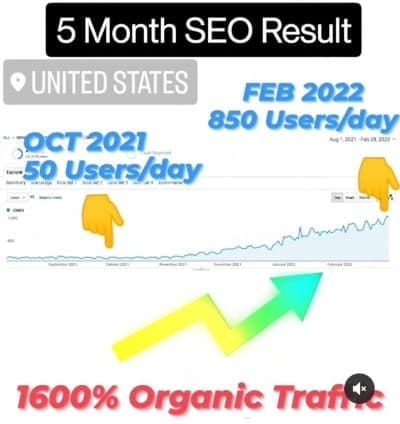
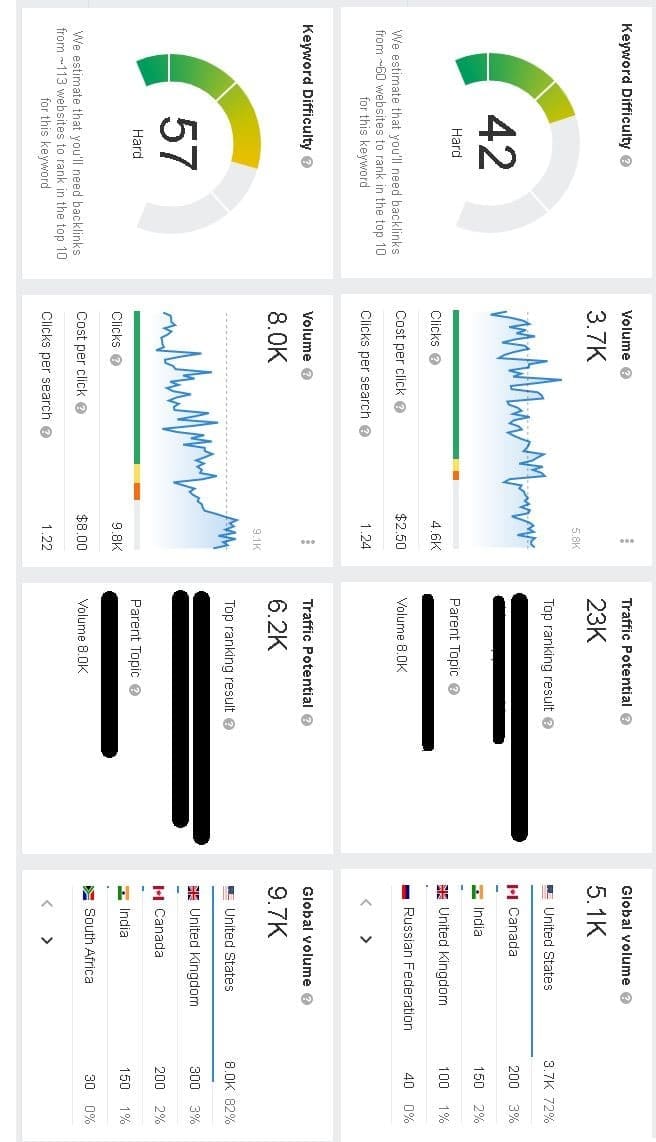
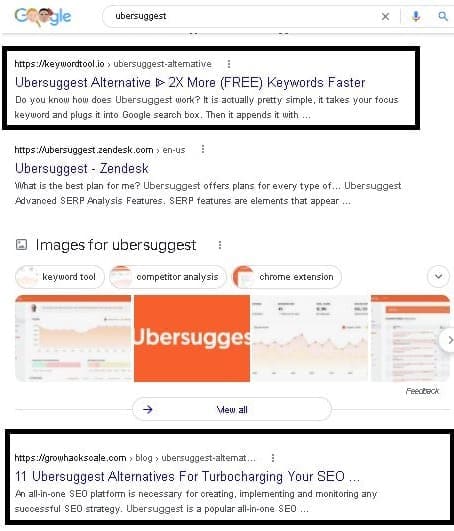
It's a good start, and for a first attempt at a case study it's not bad. But to go from "Not bad" to "Good" you need to move away from just clicks and into conversion studies. Getting clicks is easy if you don't care whether they convert, so always show that the traffic had some value for business.
Ammon at his best 🙂
Dabi ✍️
Yes Ammon Johns, Thank you so much for the motivation. We are working exactly on the conversion rate now. Earlier .11% conversion when we started. Current conversion rate is .98%. but since the traffic raised significantly. It turned out to be profitable.
since we assured the traffic growth first we will be majorly working on conversion end now onwards.
Just for reference, conversions vary by industry (people 'shop around' more for some products than others, such as insurance, or expensive electronics products, or cars). However, a 1% conversion rate is generally considered rather low, and the average across the household electronics industry (for an example) is around 2%.
Personally, I always like to work on conversions BEFORE going for traffic volume. Because if you are only converting 1%, what experience are the other 99% who didn't buy telling their friends about? At the very least, they are telling their family and friends about the better deal they found on a competitor. At worst, you are actively giving people a negative experience of the brand, and doing it to thousands per day instead of hundreds while you fix it…
Carlo » Ammon Johns
1% of 30000 visits or 2% of 5000 visits
Ammon Johns 🎓 » Carlo
Any fool can make up imaginary numbers. However, in the real world of Search Engine Optimization (SEO), it is often a lot, lot easier to go from 0.5% conversion rate, or less, that many sites may have, to a 2% conversion rate, meaning 4 times as much profit, 4 times the margins on ad spend, Pay Per Click (PPC), and investment in any work, than to get 4 times the traffic.
In this specific we are looking at a case where at worst it had a 0.11% conversion rate, or just 1 conversion per thousand visits. Going from that 0.11% conversion rate to a still modest 3% conversion rate would be the exact equivalent of going from 1,000 visits per day to 30,000 visits per day in terms of sales volume and actual business delivered. Getting 30x growth in SEO is rarely as simple or cheap to achieve either. And that's before factoring in the negative brand experience part.
Kieran
Silly question but I is this an eCommerce site so you were writing content related to the core business product sales?
No, not Ecom site. A B2B and B2C business. Because of B2B nature of business, we could produce navigational content, targeting other brands keywords
Patil » Dabi
do you have an article which talks on how to target other brands keywords? Ammon Johns do you know any?
Dabi ✍️ » Patil
Taking on other's brand keywords is like running on a thin ice. Worst case scenario can be a law suite.
Patil » Dabi
Law suite for using their keywords on our site how so?
Dabi ✍️ » Patil
If you write something controversial or misleading. It is likely to happen. You have to be very careful with the words. You are going to steal someone else's traffic. See in the attached image. How some websites are trying to get clicks on the keyword Ubersuggest by saying Ubersuggest alternative.
No photo description available.
Dabi ✍️ » Patil
Actually it is the first time we tried this approach. Since we were already paying heavy ppc cost no other brands keywords
Reeves
hey thanks for this. What is a navigational keyword?
Reeves navigational keywords are keywords related to brand queries. For example XYZ cost, XYZ reviews, XYZ vs ABC. Quiries in which user already cleared about the brand and searching for more things
Frazier » Kunal
That sounds more like a commercial keyword to me whereas I think of navigational keywords as something like "Citibank login" which brings the searcher to a specific page.
Really enjoying the post!
Reeves
ok great to know thanks for the education!
Tuma
Great work. I wish you much success. Can you give an example of a transactional keyword?
Transactional keyword like car insurance, home loan anything with the commercial intent to buy
Ammon Johns 🎓 » Dabi
Those aren't what is classed as transactional unless it includes words like 'buy', 'shop', 'store', 'download', etc. Thousands of people use keywords like "car insurance" when just browsing and researching, and those are classed as informational, not transactional.
Gurpreet » Dabi
Info : users wants information about something eg How to , Why ,When etc
Transactional : specific Intent to buy ,shop online
Commercial investigation : Investigating more with intention to buy like Best in a category , Reviews of products, models of a product etc
Navigational : When user wants to to a particular website or a brand . Like iPhone Amazon
Dabi ✍️ » Ammon Johns
I got the point. I think I mis understood the classification. Agree on your point. Thanks for a clear classification.
Dabi ✍️
Gurpreet thank you. I agree with your classification. But I am quite confuse because of Google behaviour.
For instance
See these 2 keywords
1. T shirt
2. Buy t shirt
How will you classify these two keywords?
Both are having transactional results ranking on page 1
Dabi ✍️
Yes I agree with you. But i take major decisions based on Search Engine Result Page (SERP) analysis. I have seen there are hidden intents that we can find out from SERP page one analysis. I worked in Ecom industry in India and Singapore and noticed that generic keywords tends to convert much better if the page 1 results are all transactional. My defination of transactional keyword is something where the big G is giving preference to transactional pages over informational pages in ranking.
Viksna
How big was the investment to produce all the content?
Around $3500- $4000
Fabela
Good job. I get so jealous when I see stuff like "we published roughly around 100 blogs in 3 months with an average length of 1500 words per article" as with main clients this is absolutely impossible as they are sticklers about their content lol
Yes, I absolutely agree with you. I forget to mention, This was the BIGGEST task. it involves a lot of convincing, reviewing, editing, Yes and No in the very beginning. But once they see things moving forward and see their PPC expense reduced significantly with better quality of leads. They understood the whole journey.
Fabela » Dabi
Nice! We are in what I would call a highly competitive micro-niche where the niche content around the micro-niche wouldnt necessarily convert into leads / high quality leads. The good old SEO "it depends" LOL 🤣🤣🤣
Dabi ✍️ » Fabela
😂😂, It depends on my strong prayers to google.
Also, if we were 1 month late in showing results, We have to switch to something else.
Fabela » Dabi
Bravo for flawless execution keep it up
Keyword Research, Keyword Cluster, and The Group of Topics for Content Niche
The Anchor Text Ratio of Backlinks
Two Steps Only Have Increased My Blog Traffic by 3x a Month: Pillar Content and Influencer Outreach on LinkedIn, Quora, and Twitter Through the Social Share!

